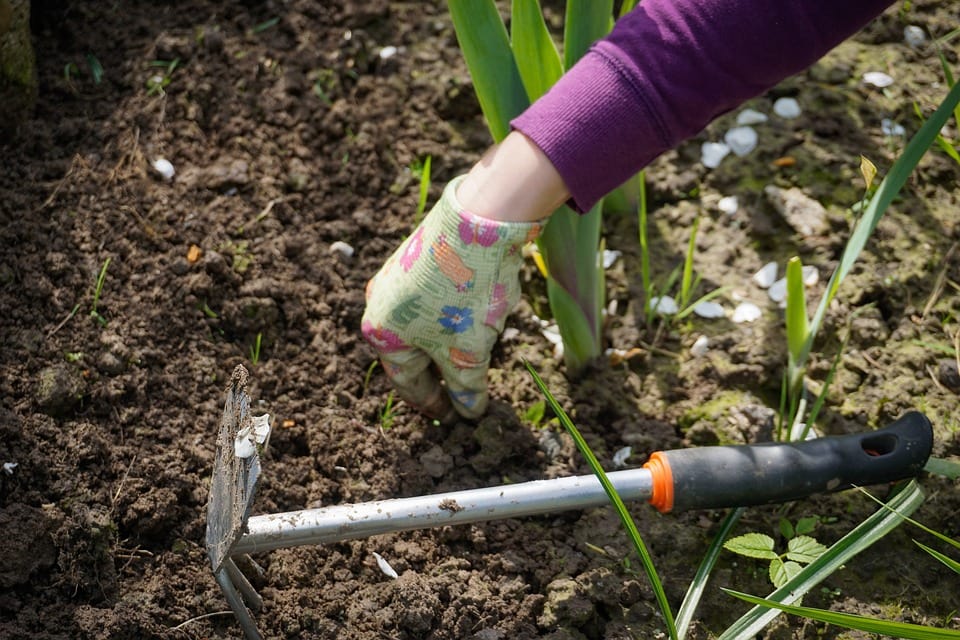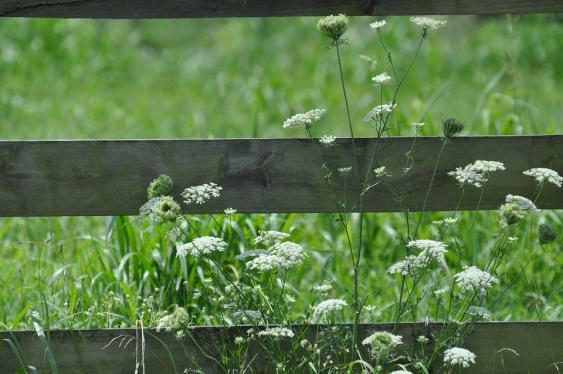Weeds can drive you crazy especially when they seem to take over your yard! Weeds not only infiltrate and disrupt our well-planned designs and garden beds, but they also compete with desirable plants for nutrients and water, affecting the plants’ ability to thrive. Montgomery and Chester counties have had a mild winter and decent rainfall, and winter weeds are already beginning their heyday in our landscapes right now.
So what’s a weed warrior to do? At Whitehouse Landscaping, we work hard in keeping your landscape free from weeds. But in this blog, we wanted to give you few tips to help you understand how to prevent weeds from growing and how to kill weeds that are visible.
Basic Weed Facts
Why so many weeds? Weed seeds are airborne, which mean they can be easily carried from one yard to the next by blowing in or washing in with surface water. They can be transported by humans, animals, and insects. Birds drop seeds regularly and they can also be brought in with manure, etc.
Weed seeds need light. In addition to sunlight, they need warm soil and water. Clear away weeds from a bed, and then instantly cover the ground with mulch to block light from the soil. Weeds may spring from roots you missed, but very few new weeds will pop up from the seeds, except where soil is exposed.
Weed seeds found in soil. There’s a lifetime supply of weed seeds already hidden in the soil. When a garden is tilled, a new crop of weeds are brought to the surface. You can suppress weed germination by reducing tilling. Again, mulch helps suppress seed germination.
Annual weeds. They have a life cycle of one growing season. They germinate from a seed then flower, produce seeds and die. They grow fast and have a shallow root system.
Perennial weeds. Ugh..they come back year after year and tend to have an aggressive root system. Dandelions are an example of a perennial weed.
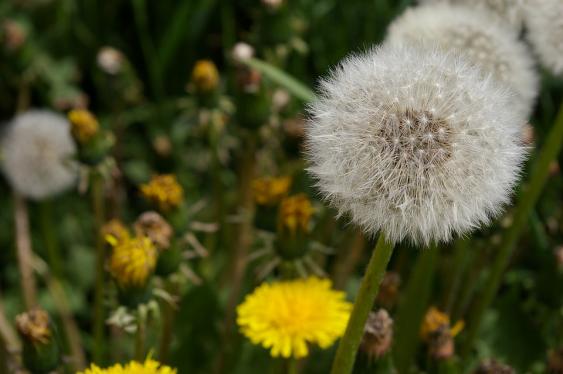
Dandelions are an example of a perennial weed. One dandelion plan can produce 15,000 seeds in one year.
Preventing the Growth of Weeds
There are some landscaping strategies that can prevent the growth of new weeds. These methods are especially effective if you currently don’t have an out of control weed invasion going on.
Drip Irrigation – By only watering specific plants on a scheduled basis instead of your entire landscape all at once, you discourage weeds from growing.
Mulch – Weeds need light to grow so by covering an area with two or three inches of mulch, you will block the sunlight and discourage weeds from sprouting.
Plant Density – garden beds that are densely planted with well-mulched soil surfaces have a fighting chance against weeds germinating.
Weed Fabric – Beware! Landscape fabric is fine to use under walkways, but not in garden beds. It does little to suppress weeds after the first season and some fabrics seriously restrict air and water exchange.
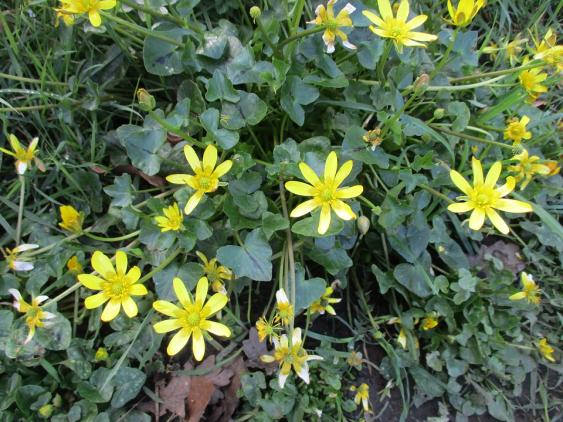
Lesser celandine or fig buttercup, a vigorous, invasive weed.
How to Kill Existing Weeds
Stay on top of them. Be diligent and take action early! No matter what form of weed killer you choose, it is important to take action early when you start to see the growth of weeds. Remove them ‘before’ they go to seed. One dandelion plant can produce 15,000 seeds in one year. This will prevent more weeds from growing over time.
Mechanical control – – Hand pulling, hoeing, digging – yes, it becomes very time consuming at first but the more often you weed, the less time it takes.
Natural Weed Control – There are many natural alternatives you can use. One popular recipe is 1 gallon of Vinegar, 2 cups of Epson Salts and l/4 cup of Dawn (blue) dish soap. Just mix and spray. Many swear by it. It works best on smaller, weaker plants. But in a controlled study, vinegar solution will help but never get the job done like RoundUp, especially if things are out of control, if it’s a perennial weed, or the weed has a tap root.
Chemical Control – Using a chemical control is sometimes necessary. Weed killers will fight the weeds at their core – killing them all the way to their roots. They can cover a large area quickly and kill more weeds in a shorter amount of time. They are especially effective when you have an aggressive weed. Remember, chemical weed control can kill more plants than intended if you choose the wrong type. If you use a non-selective herbicide, you may accidentally kill surrounding plants along with the weeds.
The best type of weed killer you should use is definitely up for debate. We typically are advocates for what we think is environmentally conscious but many homeowners have out of control and invasive weeds that need aggressive treatment to get them under control. Avoiding the use of chemicals altogether is always an option and each homeowner has his or her own threshold for weeds.
4 Types of Chemical Weed Killer
Herbicides, also known as chemical weed killers, are chemical mixtures used to kill and control weeds. Herbicides can also be selective or non-selective. Selective herbicides are those types that only kill selected or target weeds. Non-selective herbicides can kill any plant they touch without being at all selective. These require careful handling so as not to damage wanted garden plants.
Non-Selective Herbicides – herbicides that do not discriminate the plant type they target.
Selective Herbicides – herbicides that only kill certain types of weeds but keep other plants, like grass from dying.
Pre-Emergent Herbicides – prevent weed growth by killing seeds before they emerge or germinate. It does not kill existing weeds. An example of a pre-emergent herbicide, such as Preen, will effectively prevent weeds for up to three months. Easy to apply, this herbicide may be sprinkled on the soil surface of garden beds or on top of mulch any time of the day throughout the growing season. Simply follow directions.
Some herbicides are also available as combination products. For instance, Preen ‘n Green, offers plant nutrition in addition to weed prevention. By combining the two, you eliminate much of the work required to keep your garden flourishing and encourage strong root development and abundant blooms.
Post-Emergent Herbicides – only work on weeds that have already begun to grow. They actually kill existing weeds, but won’t prevent new ones.
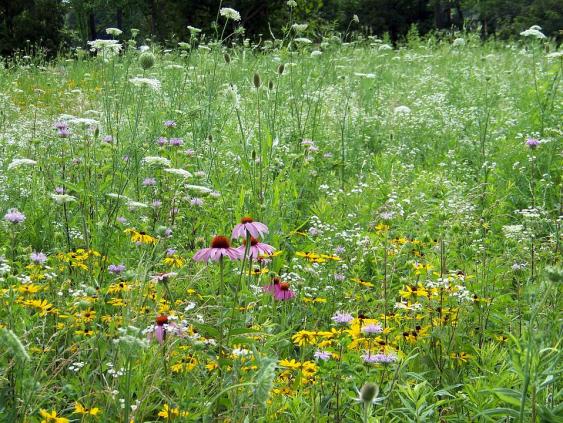
Some weeds can be attractive, and especially nice in a native environment.
Weed Prevention in Turf
Lawns that are healthy and strong will naturally reduce weeds from taking over. Healthy soil boosts the health of turfgrass, allowing it to compete against common weeds and at the same time, resist pests and disease. Fertilizer is a temporary fix for a green, weed free lawn. But if you have healthy soil, fertilizer works better.
Whitehouse Landscaping uses an all natural organic soil stimulant Holganix, which uses natural micro-organisms and enzymes that turn a small amount of fertilizer into the most effect lawn treatments available. Vigorous growth in your grass will limit weed growth, and you will need less fertilizer and need less maintenance. Ou sustainable method gives you fewer weeds naturally. Read more about our effective lawn care treatment.
Not All Weeds are Bad
Some weeds can actually be quite attractive in the garden, so don’t dismiss the good ones. Joe-pye weed – tall stems of vanilla-scented rose-colored flower clusters, Chicory – brilliant blue flowers, Hawkweed – daisy-like blooms on fuzzy stems and Queen Anne’s lace – lace white, umbrella-shaped flower heads. These look great in a native environment.
Maintaining your yard can be a time consuming and labor intensive process. This is where professional, dependable maintenance from Whitehouse Landscaping can help. Our Menu of Property Services will help you identify your property’s needs. As part of our service menu, we offer a bed maintenance program designed to give your landscape areas seasonal coverage against pesky weeds. Give us a call at 484-300-4290 or fill out our contact form on our website.

